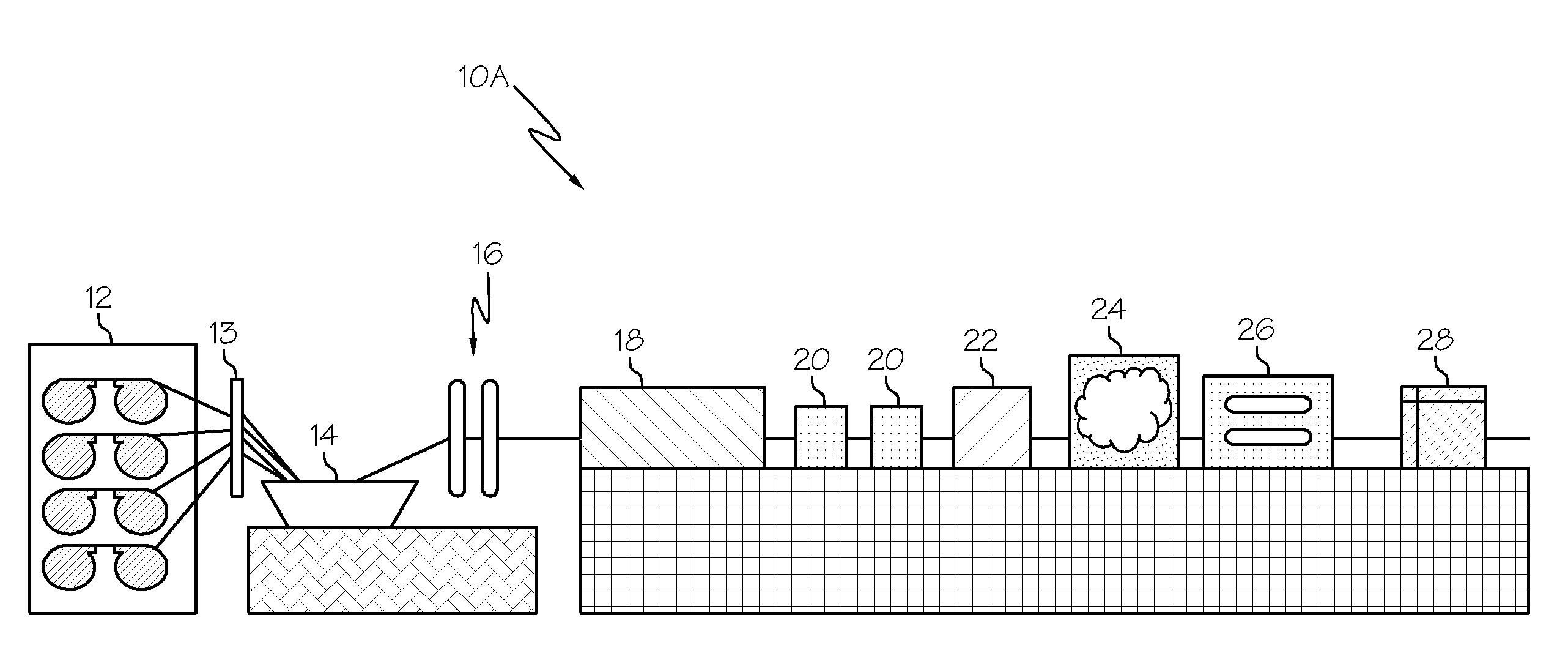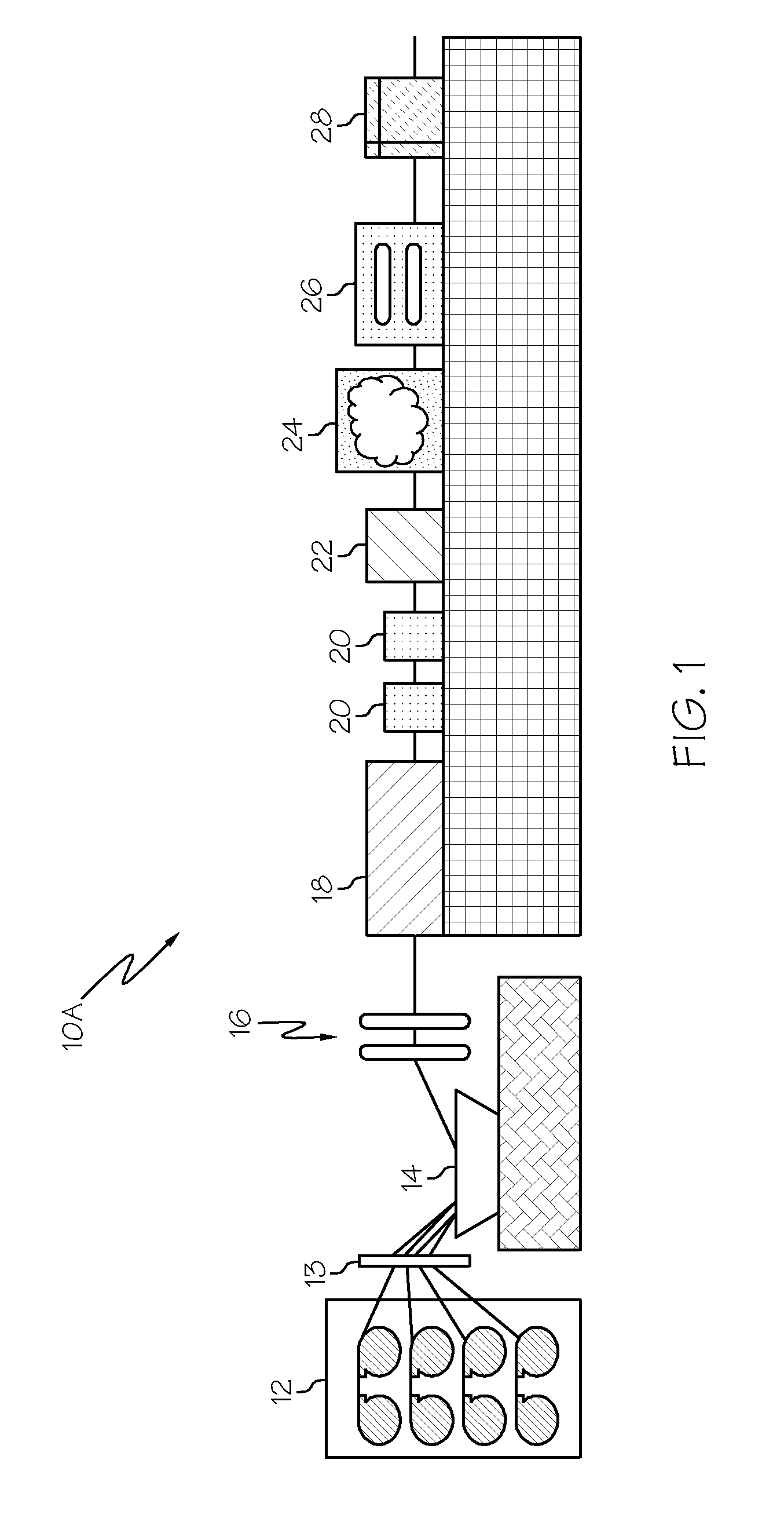Continuous Powder Coating Method for Profiles Having Little or No Conductivity
a technology of conductivity and powder coating, applied in the direction of coatings, liquid surface applicators, pretreated surfaces, etc., can solve the problems of insufficient conductive polymers typically used in such processes to efficiently obtain satisfactory paint thickness and coverage, insufficient efficiency of electrostatic coating, and inability to achieve conventional electrostatic coating techniques. to achieve the effect of electrostatic coating in-line efficiently and economically
- Summary
- Abstract
- Description
- Claims
- Application Information
AI Technical Summary
Benefits of technology
Problems solved by technology
Method used
Image
Examples
Embodiment Construction
[0030]While this invention may be embodied in many different forms, there shown in the drawings and described in detail herein specific preferred embodiments of the invention. This description is an exemplification of the principles of the invention and is not intended to limit the invention to the particular embodiments illustrated.
[0031]The present invention relates to an improved in-line method of providing conductivity to a substrate having little or no inherent conductivity by applying a primer comprising a halogen, halogen salt, halogen complex or mixture thereof, and electrostatically painting the substrate. The method finds particular utility for profiles formed using pultrusions / extrusion of materials that have little or no conductivity.
[0032]Examples of such materials include, for example, organic materials or composites thereof, fibers or composites thereof and poor metals or metalloids and alloys thereof.
[0033]Examples of poor metals include, but are not limited to, alum...
PUM
| Property | Measurement | Unit |
|---|---|---|
| Electrical conductivity | aaaaa | aaaaa |
| Length | aaaaa | aaaaa |
| Electrical conductor | aaaaa | aaaaa |
Abstract
Description
Claims
Application Information
 Login to View More
Login to View More - R&D
- Intellectual Property
- Life Sciences
- Materials
- Tech Scout
- Unparalleled Data Quality
- Higher Quality Content
- 60% Fewer Hallucinations
Browse by: Latest US Patents, China's latest patents, Technical Efficacy Thesaurus, Application Domain, Technology Topic, Popular Technical Reports.
© 2025 PatSnap. All rights reserved.Legal|Privacy policy|Modern Slavery Act Transparency Statement|Sitemap|About US| Contact US: help@patsnap.com



